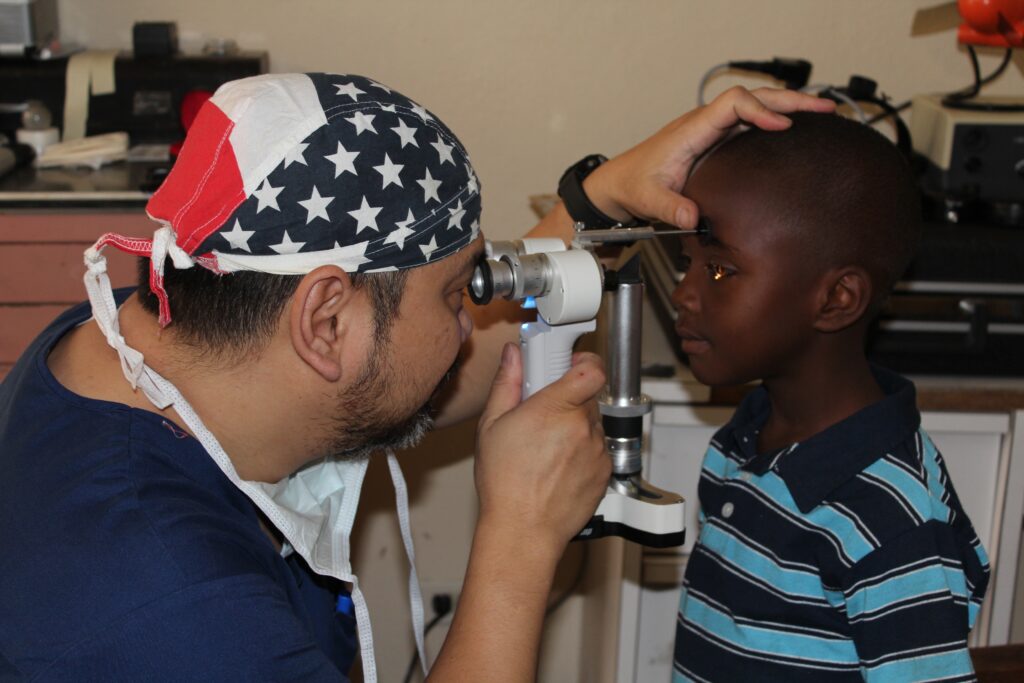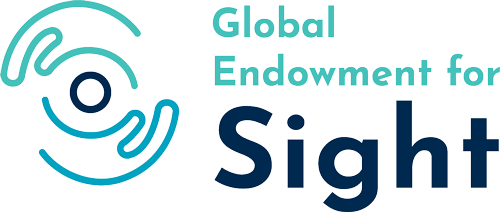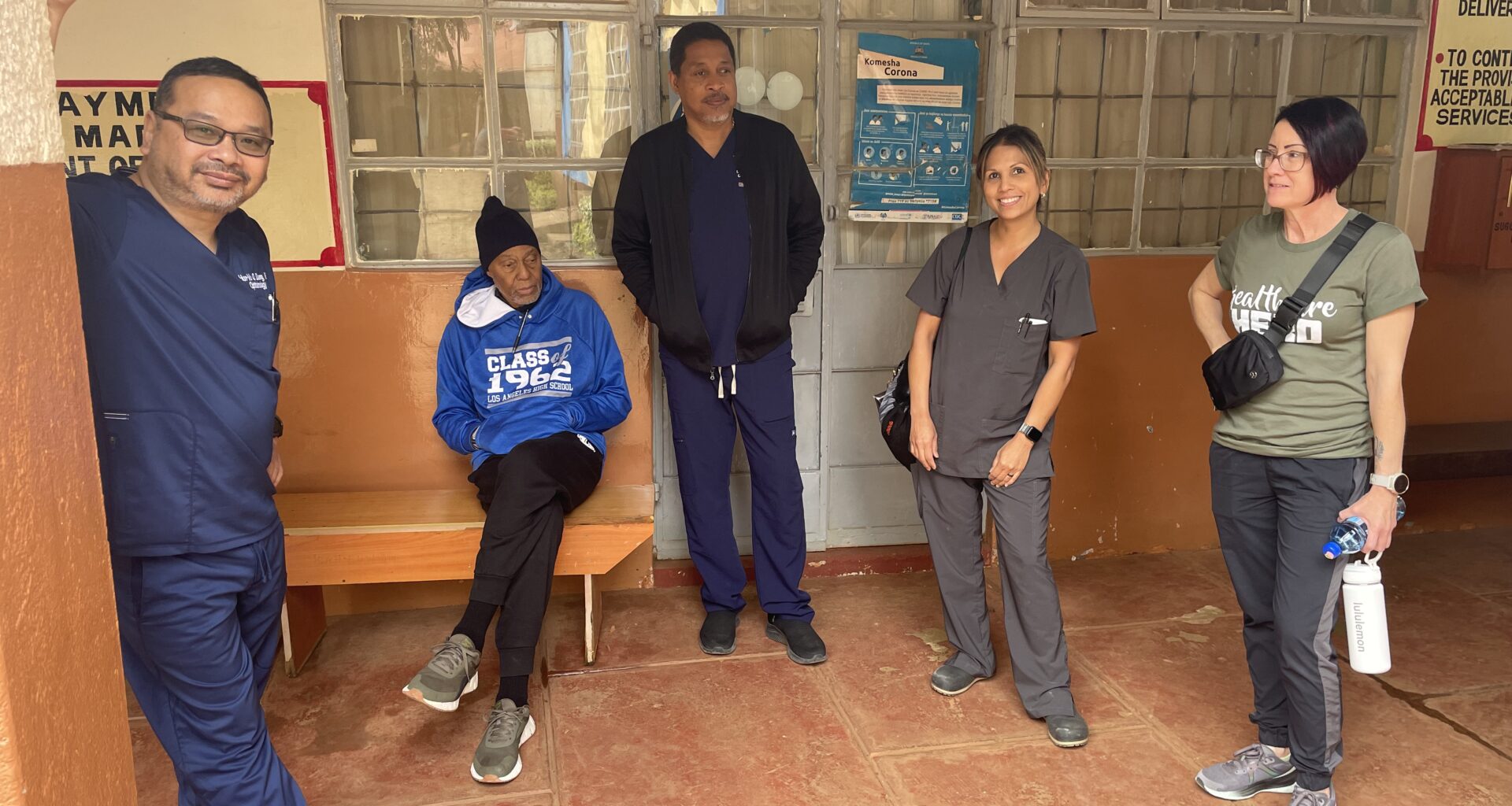Our medical team’s return to Juja, Kenya was more than just a medical mission; it was a testament to the resilience of both patients and healthcare providers in the face of challenges. Representing GES as one of our leaders and ophthalmologist volunteers, Dr. Duong embarked on an extended trip that would leave a lasting impact on both him and the community we serve.
With prior missions under his belt, he understood the challenges and opportunities that awaited him. Over 30 patients had been evaluated and deemed eligible for surgery, yet only five showed up on the day of operation. The reasons behind the no-shows remained elusive, highlighting the obstacles in accessing healthcare in the region. Despite this setback, Dr. Duong remained undeterred, focusing on the positive outcomes he could achieve. One such outcome was the transformation of an eight-year-old girl with Marfan syndrome – a genetic disorder affecting connective tissue. In her case, Marfan syndrome had led to severe vision impairment, hindering her ability to see clearly through both eyes. Through his and his team’s expertise, she received the surgery she desperately needed and left with clear vision, a tangible success story that, as Dr. Duong put it, “was worth the trip itself”.
However, Dr. Duong recognized that sustainable change required more than just individual surgeries; it necessitated building capacity within the local healthcare system. Sister Julie, Kalimoni Hospital’s administrator, had initiated an eye care program, but the lack of ophthalmologists posed a significant challenge. Dr. Duong saw an opportunity to contribute beyond his surgical skills by taking a sabbatical in order to remain in Kenya after our medical mission trip for an additional few months to train and empower the existing medical staff. His efforts to up-skill the incumbent ophthalmologist were cut short when the young ophthalmologist was dismissed, underscoring the fragility of the system. Despite this setback, Dr. Duong’s sabbatical became a catalyst for change, empowering healthcare assistants to take on expanded roles and bridging gaps in the provision of eye care.

His approach was hands-on and immersive, blending theoretical lectures with practical clinical experience. By working directly with the nurses and physician assistants in satellite clinics, Dr. Duong ensured that they not only understood the principles but could also apply them effectively in real-life situations. The impact was evident as they quickly grasped concepts like identifying red flags for conditions such as uveitis and recognizing symptoms of glaucoma.
Despite encountering logistical hurdles, such as a lack of technology and the need for extra effort to disseminate information, Dr. Duong remained steadfast in his commitment to knowledge transfer. His dedication was matched by the enthusiasm of the local healthcare workers, eager to enhance their skills and improve patient care.
Overall, the journey to Kenya was not just about performing surgeries but about laying the foundation for lasting impact, one that would continue to benefit the community long after our departure. Dr. Duong exemplifies the resilience and dedication needed to effect sustainable change in global healthcare.

